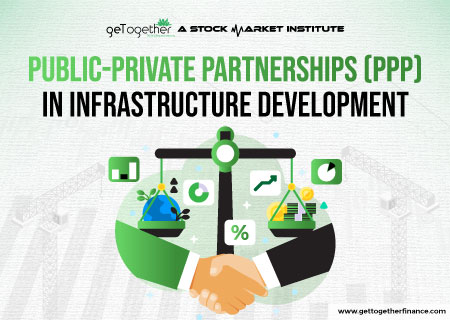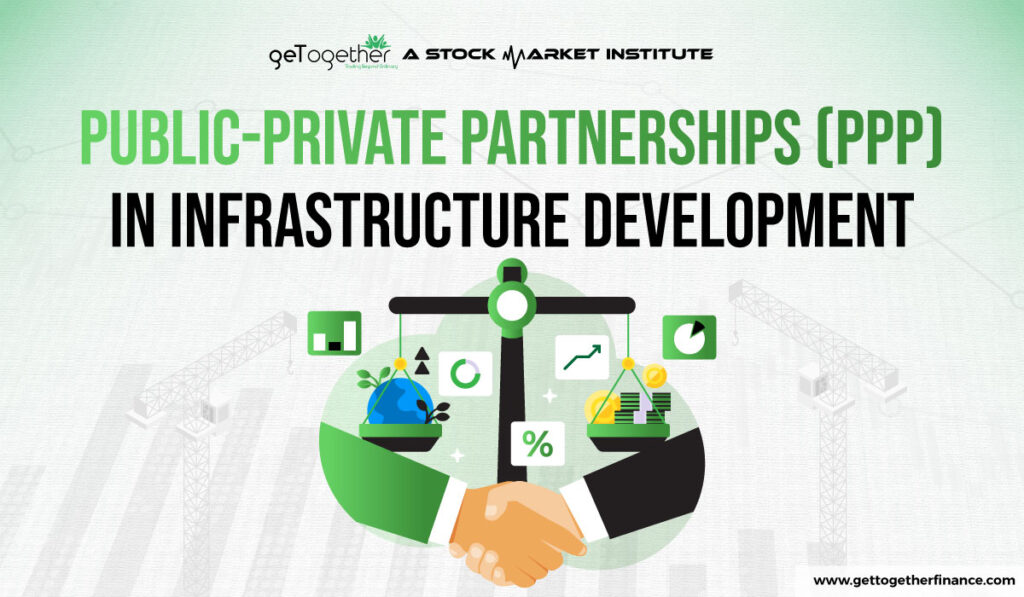Public-Private Partnerships (PPP) in Infrastructure Development


Overview
The significant expense of infrastructure projects is a major hurdle for countries aiming to develop a robust infrastructure network. Efficient transportation networks, reliable power grids, and robust communication systems form the backbone of a thriving economy and a high quality of life for its citizens.
Traditionally, governments have funded these projects entirely, but keeping such massive chunks aside can choke resource flow and hinder other important government initiatives.
Public-Private Partnerships (PPPs) have emerged as a leading solution for financing large-scale infrastructure projects. PPPs have become one of the popular choices to get major infrastructure done without keeping the whole money upfront.
Both private companies (businesses) and the public sector (government) show significant participation to boost the effectiveness and efficiency of the projects. In 2020-21 alone, the government appraised a total of 125 PPP projects, raising the budget to ₹1.74 lakh crore in public and infrastructure segments.
With this blog, we will understand the Public-Private sector, how it works, and what are its benefits and setbacks. Despite this, we will further dive into the major insights of infrastructure projects in India to have a better look at specific industries.
What is Public-Private Partnerships (PPPs)

Public-private partnerships, or PPPs, are teamwork between the government and private companies to build and run projects like buses, parks, and big halls.
There’s no strict definition, but it’s basically a long-term collaboration where both sides share risks and rewards.
The private company invests money and expertise to make a profit, while the government may change some rules to help out. If done right, this partnership benefits both sides, bringing good returns for investors and better value for the public.
Sometimes, Public-private partnerships let private companies collect fees or get some ownership of public things like parks, roads, or buildings. The government might also give them a break on taxes or protect them from getting blamed if something goes wrong. This is all because private companies are helping to build and run these things.
How Do PPPs Work

Here is the process that government follows to collab with private companies:
The government defines the need (Tender)
The public sector identifies the need for a specific infrastructure project and outlines its objectives and desired outcomes. This could be a new highway, a water treatment plant, or a renewable energy facility. They release the tender of the project with specific terms and conditions known as Request for Proposal / Request for Tender (RFP / RFT).
The private sector brings expertise and investment
Private companies bid for the project based on their technical expertise, financial capabilities, and experience similar to the terms and conditions mentioned in RFT and RFP. The winning bidder provides a significant portion of the financing for the project and takes on the responsibility for construction and, in some cases, ongoing operation and maintenance.
Typically these contracts last for 20-40 years. Where private companies manage the designing, execution, and financing of the project whereas the public sector oversees monitoring compliance with specific goals.
Also Read: Power of Corporate Actions
Risk and reward sharing
PPPs include a contractual agreement that outlines risk and reward sharing between the public and private partners. The government may offer concessions such as toll collection rights or long-term service contracts in return for the private sector’s investment and expertise.
Pros and Cons of Public-Private Partnerships (PPPs)

Like every partnership, in public and private partnerships, both sectors face risks and rewards together, which comes as the face of pros and cons. Let’s learn a few of them:
Pros of PPPs
- Faster project completion: Companies often have the experience and money needed to build things quickly, so projects get done sooner with PPPs.
- Sharing the burden: The government doesn’t have to shoulder all the costs of building important infrastructure. Companies pay for some of it.
- Better quality projects: Companies compete for PPP projects, so they often try to build things to a high standard to win the bid.
Cons of PPPs
- Can be complex: Setting up PPPs can be complicated and take a long time. There are many details to iron out in the agreements between the government and the companies.
- Affordability concerns: Sometimes, the companies that build the projects might charge fees to use them later. This could make it expensive for people to access things like bridges or hospitals.
- Risk sharing: While risks are shared, there’s a chance the company might not be successful, leaving the project unfinished.
Overall, PPPs can be a good way to build important infrastructure in India. However, it’s important to consider both the pros and cons before starting a PPP project.
PPP Contract Types
PPPs can be done in different ways in terms of delivery methods. Each model has a different nature and degree of participation, maintenance, and operations. Here are the major contractual agreements used within a P3 model:
- Build-and-transfer (BT)
- Build-own-and-operate (BOO)
- Build-lease-and-transfer (BLT)
- Build-operate-and-transfer (BOT)
- Contract-add-and-operate (CAO)
- Build-transfer-and-operate (BTO)
- Develop-operate-and-transfer (DOT)
- Rehabilitate-operate-and-transfer (ROT)
- Rehabilitate-own-and-operate (ROO)
Public-Private Partnerships (PPPs) in Indian Infrastructure

India’s economic growth hinges on a robust and well-developed infrastructure sector. However, bridging the infrastructure gap remains a crucial challenge. According to the National Infrastructure Pipeline (NIP) of India, an estimated investment of ₹111 lakh crore (US$1.5 trillion) is required by 2025 to meet the country’s infrastructure needs.
Public-Private Partnerships (PPPs) have emerged as a significant tool to address this funding gap. These partnerships leverage private sector expertise and funding alongside public sector resources to develop critical infrastructure projects.
Growth and Impact
- Project Numbers: As per the World Bank, India boasts one of the world’s largest public private partnerships programs with over 2,000 projects in various stages of development.
- Sectoral Focus: Transportation (roads, railways, airports) and energy (power generation and transmission) are the leading sectors utilising PPPs.
- Investment Attracted: A 2018 report by the Indian Infrastructure Finance Company Limited (IIFCL) suggests that public-private partnerships attracted private sector investments of over ₹4.34 lakh crore (US$58.8 billion) between 2014-15 and 2017-18.
Challenges and Considerations:
While PPPs hold immense potential, there are challenges we may see ahead:
- Project Delays: Complex regulatory processes and land acquisition hurdles can often lead to project delays, impacting project viability.
- Risk Allocation: Striking a balance between risk sharing between the public and private sectors is crucial for project success.
Despite the challenges, the Government of India is actively promoting PPPs. Initiatives like streamlining approval processes and providing viability gap funding are steps towards attracting greater private sector participation.
Conclusion
Public-Private Partnerships, or PPPs, are like a teamwork between the government and private companies to build important things in India, like roads and bridges. These 3Ps can be a big help because the government doesn’t have to pay for everything alone. Many projects are already underway, showing that PPPs can work well. Faster building and potentially better quality projects can give India’s economy a big boost. By working together, the government and private companies can use PPPs to build a strong foundation for India’s future!
FAQs
Are Public-Private Partnerships a good thing for India?
Public-Private Partnerships can be a good way to improve infrastructure, but it’s important to weigh the pros and cons of each project.
What are any three major Public-Private Partnerships projects in the Infrastructure sector in India?
While there’s no single definition of “biggest,” here are 3 major Public-Private Partnerships projects in India that stand out for different reasons. Three projects are the Delhi Metro Rail Project, the Mumbai-Pune Expressway, and the Deen Dayal Upadhyaya Gram Kaushalya Yojana (DDU-GKY).
What happens if a Public-Private Partnerships project fails?
While rare, there’s a small chance a company might not be able to finish a project. In such cases, the government might have to step in and take over or find another company to complete the work.
Are there any alternatives to PPPs for infrastructure development?
Yes, the government can use its own funds to build projects. However, this can be slow and expensive. Other options include public borrowing or raising taxes, but these also have drawbacks.



 Facebook
Facebook  Instagram
Instagram  Youtube
Youtube 
